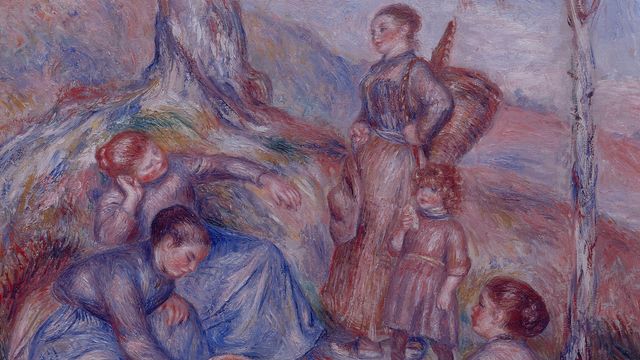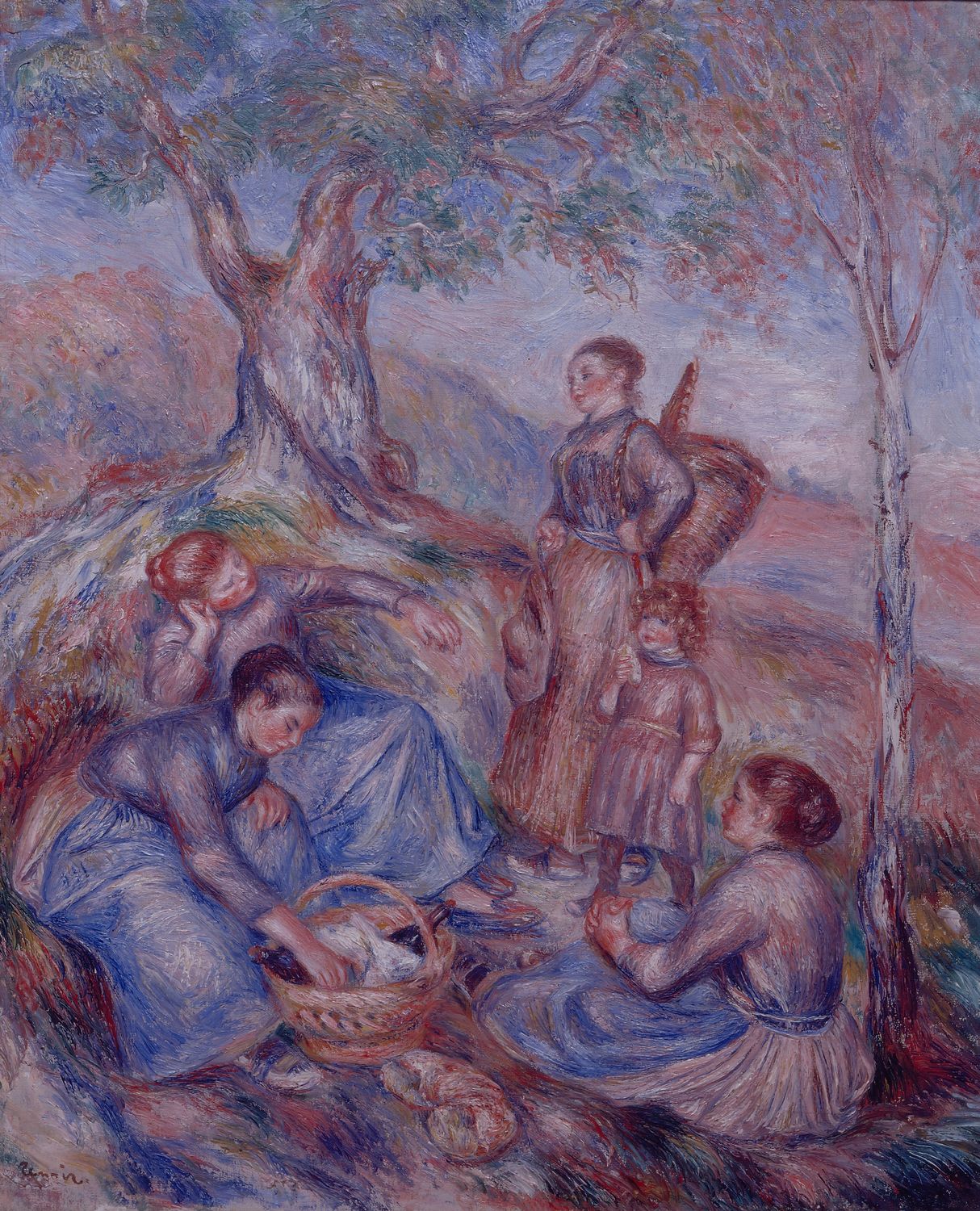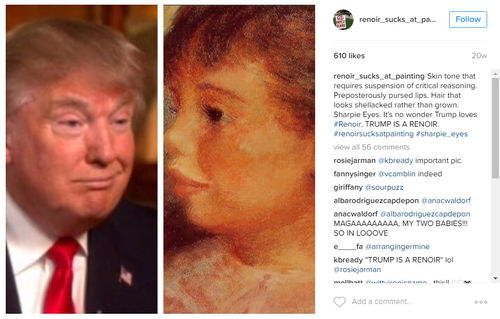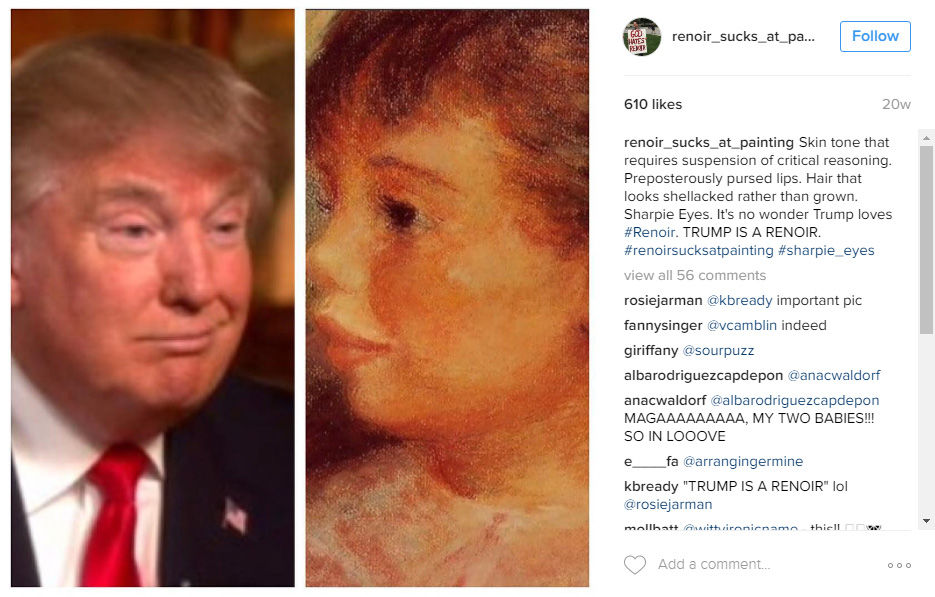
Where are They Now? Renoir's Grape Pickers at Lunch
"[B]y 1883, a break had occurred in my work. I had reached the end of Impressionism, and I had come to realize that I didn’t know how to paint nor draw. Simply put, I was in a deadlock," declared Pierre-Auguste Renoir toward the end of his career. These words summarize the personal crisis Renoir was having with Impressionism in the early years of the 1880s, the same decade he painted Le repas des vendangeuses (Grape Pickers at Lunch) from c.1888, which forms part of the Armand Hammer Collection and is now on loan to El Museo de Arte Thyssen-Bornemisza in Spain for their exhibition Renoir: Intimacy, on view until January 22, 2017.

Two years before this newfound self-awareness, Renoir embarked on a series of travels through North Africa, Italy, the British islands in the English Channel, and to various regions within France that lasted from 1881 to 1883. At the end of this period Renoir entered what art historians call his "dry period," characterized by stylistic compositions that emphasize line and more defined forms while also using a cooler and more muted palette. A quintessential example of Renoir’s work from the late 1880s is The Large Bathers from 1884-1887 at the Philadelphia Museum of Art. In this and other works, Renoir’s female figures exhibit classical proportions and appear to be inserted in lyrical and idyllic scenes that bear a sense of timelessness.
Painted shortly after The Large Bathers, his Grape Pickers at Lunch continues to carry a similar arrangement of figures—two female figures to the left and a single figure to the right—that would invite some to say that these are the same women, now robed and with their long hairs pulled up into a bun. As with The Large Bathers, Renoir includes a fourth and fifth figure in the Grape Pickers at Lunch; however, they are closer to the foreground than in the earlier painting. The woman holding her hat with her right hand and who seems to be responsible for the young child standing next to her has been thought to be modeled by Renoir’s partner Aline Charigot and the child by Pierre Renoir, born in 1885 and who would have been between 3 and 4 years old at the time his father made the painting.
The topic of grape pickers was one he would have encountered at some point during the thirty summers he spent in Essoyes, a small winemaking village near Champagne and Bourgogne and the hometown of Charigot. In fact, it is known that in 1888, around the time he painted Grape Pickers at Lunch, Renoir spent three months in this town. It’s hard to say why he spent a lengthy period of time in this region. One theory is that he sought a more comfortable life as he had begun to suffer from rheumatoid arthritis that, according to letters to his friends and family, worsened between 1892 and 1903. We cannot know for sure whether that had anything to do with the way he accentuated the arabesque line that draws the viewer’s eye from the top of the tree toward the bottom of the painting where a twisted piece of fabric rests or the way he has played with perspective in such a way that makes the foot of the tree look like a comfy couch. What we do know from observation is that Renoir has captured all the possible forms in which sunlight can be translated into color and has successfully arrested a moment of repose during the repas.
An avid wine drinker, Renoir eventually bought a house in Essoyes in 1896 that came with a vineyard. Unfortunately for the artist, phylloxera (a pest that attacks grapevines) killed his crops. One can find resonances of the image painted by Renoir and his own experiences in France’s wine country in a photograph from around 1900 that shows vendanges and vendangeuses (male and female grape pickers) next to very low vines, which could be attributed to new crops harvested after phylloxera. The photo comes from Sologne, in the Loire Valley region, some 200 miles from Essoyes.

The life of the Grape Pickers at Lunch after Renoir painted it—and all of his oeuvre for that matter—is as fascinating today as during the time it was produced. On May 18 and 19, 1903, art critic Monsieur Arséne Alexandre sold watercolors, pastels, drawings, and sculptures that belonged to his collection at the Galerie Georges Petit. In the catalogue for the sale, the Grape Pickers at Lunch is described as an "exquis petit tableau" (exquisite small painting) and a "sorte de Watteau impressionniste" (kind of Impressionist Watteau). A write-up further explaining the artwork can be found on page 32 of the catalogue. After that sale, the painting made it to Rosenber & Stiebel in New York and lastly to the Armand Hammer Collection in 1969. As part of the Hammer Museum’s collection, Grape Pickers at Lunch has been regularly exhibited in our permanent collection gallery and has been on loan to several museums for shows such as Renoir: 1970-1982 (2001), Renoir: Master Impressionist (1994-1995), Renoir, Paintings from 1870-1914 (1984), Post-Impressionism (1979-1980), and lastly to the Thyssen-Bornemisza and to the Museo de Bellas Arte de Bilbao where Renoir: Intimacy will travel next.
Outside the purview of museums, the legacy of Renoir is going through a particularly rough patch. In 2015, a campaign bearing the hashtag #RenoirSucksAtPainting began appearing on social media. Supporters staged protests outside the Museum of Fine Arts in Boston, the Art Institute of Chicago, and the Metropolitan Museum of Art with signs that read "ReNOir" and "God Hates Renoir." The news even made it to the holy grail of American news when Laura Wegner covered the story for NPR. In her article, Wagner interviews Max Geller the leader (he would say spokesperson) of the movement who sums up his stance by saying: "I hate Renoir because he is the most overrated artist east, west, north and south of the river Seine. I think in real life trees are beautiful and the human eyeball conveys emotional force. If you took his word for it, trees would be a collection of disgusting, green squiggly lines and eyeballs would be jet black as if they were colored by sharpies." Geller, of course, is not alone—an Instagram account for the hashtag has 11,100 followers and counting.

The #RenoirSucksAtPainting movement is by no means a 21st Century opinion. Renoir had his good share of detractors in his time. Albert Wolff, an art critic for Le Figaro, did not mince words when he wrote in 1874, "Try to explain to Monsieur Renoir that a woman’s torso is not a mass of decomposing flesh with green and purple spots that indicate the state of total putrefaction in a corpse!" Ouch!
And because the internet is, well, the internet, there have been some who have taken to social media and have combined their aversion of Renoir with their revulsion of a certain presidential candidate.
To that I would say, #CutRenoirSomeSlack.








